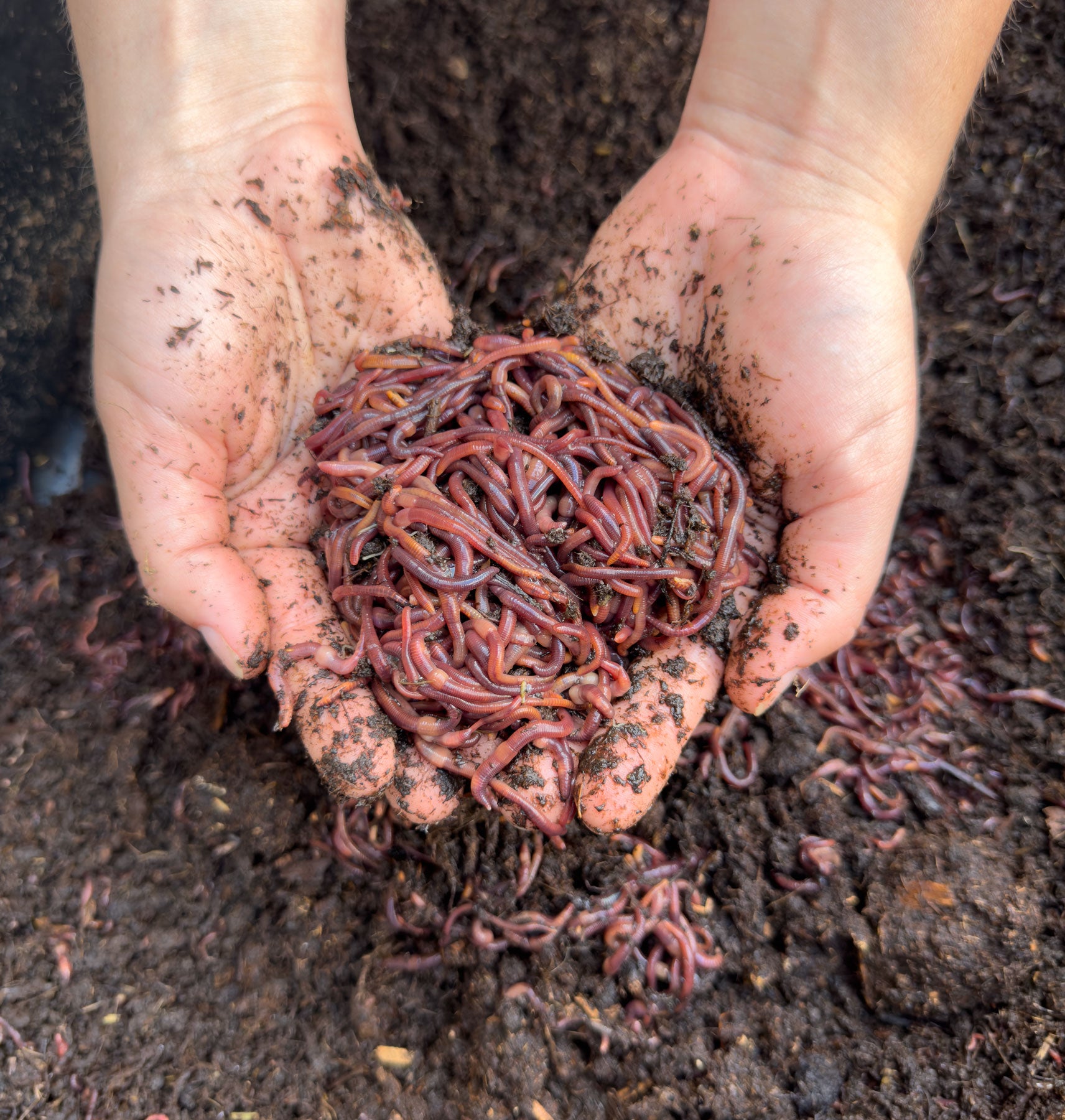Vital Overview to Red Wiggler Composting: Tips for a Growing Worm Farm
Vital Overview to Red Wiggler Composting: Tips for a Growing Worm Farm
Blog Article
Exploring the Systems of Red Wiggler Composting: A Comprehensive Guide to the Process and Its Favorable Effect on Sustainable Horticulture Practices
The complex devices of red wiggler composting, utilizing the unique physiology of Eisenia fetida, offer a compelling opportunity for improving lasting horticulture methods. As urban horticulture gains traction, recognizing the subtleties of this composting method comes to be progressively relevant.
Understanding Red Wigglers
Red wigglers, medically called Eisenia fetida, are a species of earthworm highly regarded for their performance in composting natural waste. These worms flourish in nutrient-rich atmospheres, specifically in rotting natural matter, making them suitable for vermicomposting systems - Red Wiggler Composting. Identified by their reddish-brown pigmentation and fractional bodies, red wigglers are smaller sized than typical earthworms, typically measuring between 3 to four inches in length
Their special physical traits enhance their composting capabilities; for circumstances, they have a high reproductive rate, allowing populaces to increase swiftly under ideal problems. Red wigglers take in natural product, simplifying via their gastrointestinal systems, which causes nutrient-rich castings that work as an outstanding natural plant food. Their voracious cravings enables them to process huge volumes of food waste efficiently, significantly lowering land fill contributions.
In addition to their composting expertise, red wigglers play an essential duty in dirt health and wellness. Red Wiggler Composting. They freshen the dirt and promote the decomposition of organic issue, additional enhancing the dirt community. Recognizing the attributes and eco-friendly advantages of red wigglers is essential for anyone wanting to execute sustainable horticulture techniques via effective composting methods
The Composting Refine
The composting procedure entails damaging down organic materials right into nutrient-rich garden compost, a task that red wigglers stand out at as a result of their specialized digestive systems. These worms take in food scraps, yard waste, and various other raw material, transforming them into important compost with a collection of organic and chemical procedures.
Originally, the organic issue is blended with bed linen materials such as shredded paper or dried out fallen leaves, producing an optimum setting for the worms. As the red wigglers ingest this blend, they simplify with their gut, where bacteria even more disintegrate the product. This process produces warmth, advertising microbial task, which speeds up decomposition.

Benefits of Red Wiggler Composting
Eco-conscious individuals and lots of gardeners identify the many benefits of red wiggler composting, making it a preferred selection for reliable waste monitoring. One of the key advantages is its ability to considerably lower natural waste in landfills - Red Wiggler Composting. Red wigglers successfully break down kitchen scraps and other biodegradable products, changing them right into nutrient-rich vermicompost that improves dirt health and wellness
Furthermore, red wiggler composting boosts soil framework and fertility. The resulting vermicompost is including valuable bacteria, which promote plant development and boost nutrient retention. This all-natural plant food not just supports sustainable horticulture techniques but also lowers reliance on chemical fertilizers, cultivating a healthier ecological community.
Additionally, red wiggler composting is a space-efficient approach, making it suitable for city gardeners with limited room. The procedure can be carried out inside your home or outdoors, enabling year-round composting despite climate Learn More conditions. Red wigglers are low-maintenance microorganisms that require marginal treatment, making them accessible for newbie garden enthusiasts.
Essentially, the advantages of red wiggler composting extend past waste reduction; they add to much healthier dirts, sustainable horticulture methods, and environmental stewardship, positioning it as a valuable practice in modern cultivation.
Finest Practices for Composting
For successful red wiggler composting, adhering to best techniques is vital to make the most of efficiency and guarantee an effective atmosphere for these worms. This balance promotes optimum decomposition and enhances the worms' health.
Next, screen wetness degrees, intending for a damp, sponge-like consistency. Overly wet problems can lead to anaerobic disintegration, while excessive dryness may impede worm activity. Furthermore, make certain correct aeration by transforming the compost frequently, which assists prevent compaction and permits appropriate oxygen circulation.
Temperature level is one more crucial variable. Preserve a variety of 55 ° F to 77 ° F(13 ° C to 25 ° C) to promote worm task and microbial growth. Ultimately, avoid introducing meat, dairy products, and oily foods, as these can attract bugs and develop odors.
Enhancing Sustainable Horticulture
Sustainable horticulture symbolizes a holistic method that integrates ecological principles with useful horticulture methods. By incorporating techniques such as visit our website red wiggler composting, garden enthusiasts can significantly improve their techniques, promoting an extra resilient ecological community. Red wigglers, renowned for their reliable decay capabilities, transform organic waste into nutrient-rich garden compost, thus improving the dirt without relying on chemical plant foods.
Implementing sustainable gardening techniques, such as plant rotation, buddy planting, and mulching, more enhances the benefits of composting. These practices not just boost soil framework and fertility yet likewise promote biodiversity, attracting helpful insects and organisms that contribute to grow wellness. Making use of native plants can decrease water usage and decrease maintenance, aligning with water conservation efforts.

Conclusion
In final thought, red wiggler composting represents an important approach for boosting lasting gardening techniques. Eventually, the fostering of red wiggler composting can substantially add to environmentally friendly horticulture, benefitting both city and amateur garden enthusiasts in their growing initiatives.
The intricate devices of red wiggler composting, making use of the special physiology of Eisenia fetida, offer an engaging opportunity for boosting lasting gardening techniques. Recognizing the qualities and ecological benefits of red wigglers is vital for anybody looking to apply sustainable horticulture techniques through reliable composting techniques.

In final thought, red wiggler composting stands for a crucial method for enhancing lasting gardening techniques. Inevitably, the adoption of red wiggler composting can considerably contribute to green gardening, benefitting both city and novice gardeners in their farming efforts.
Report this page